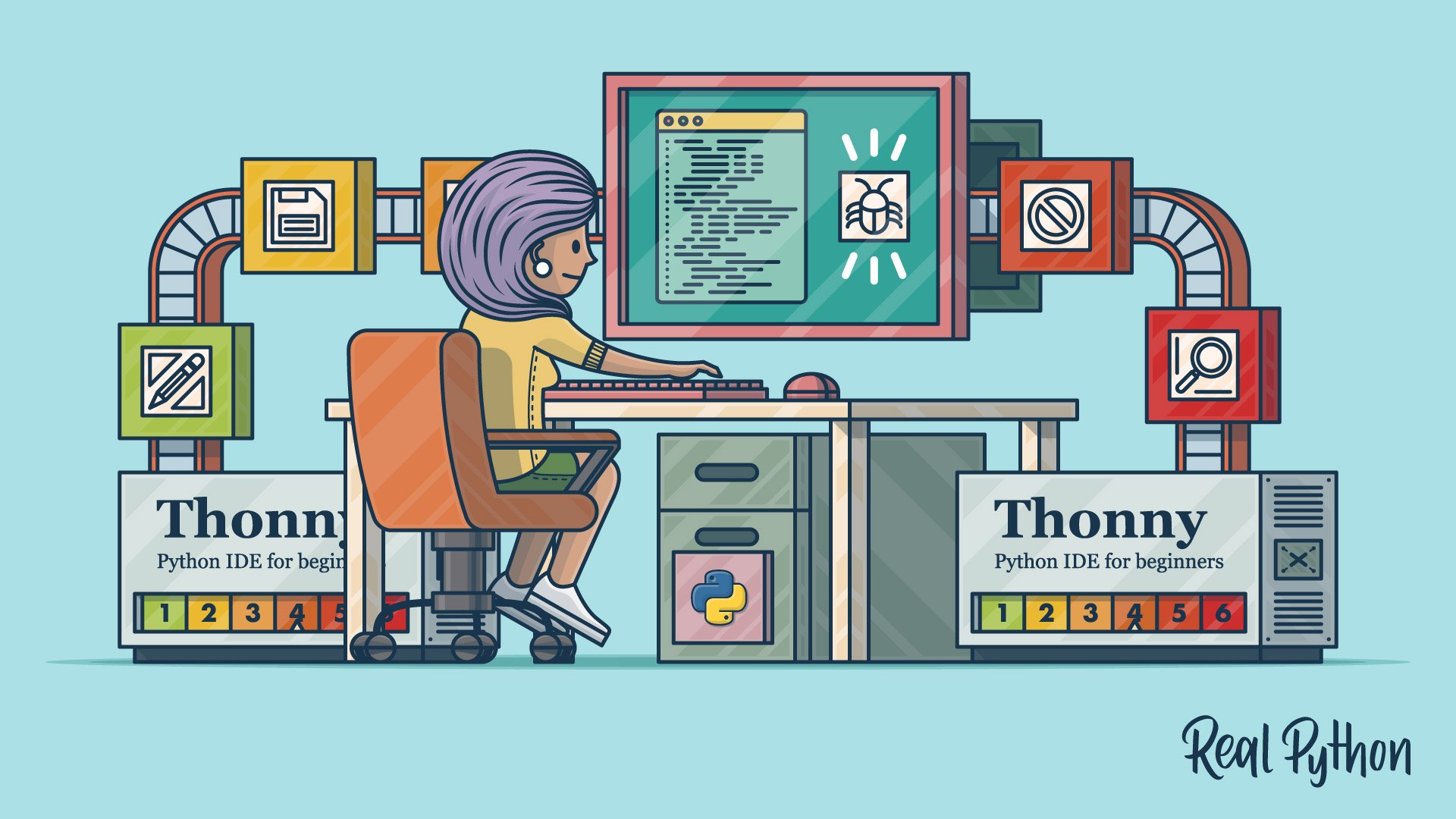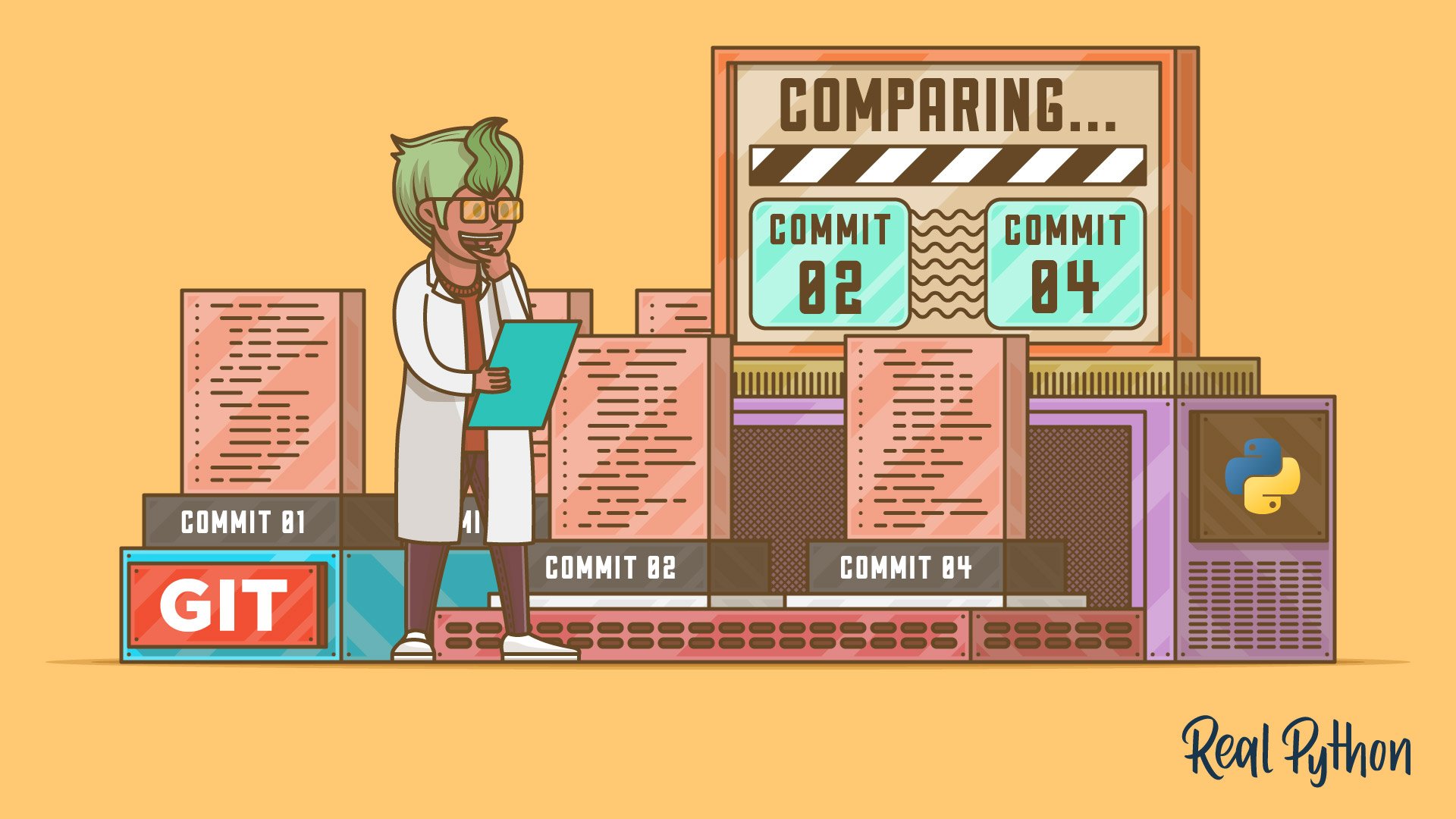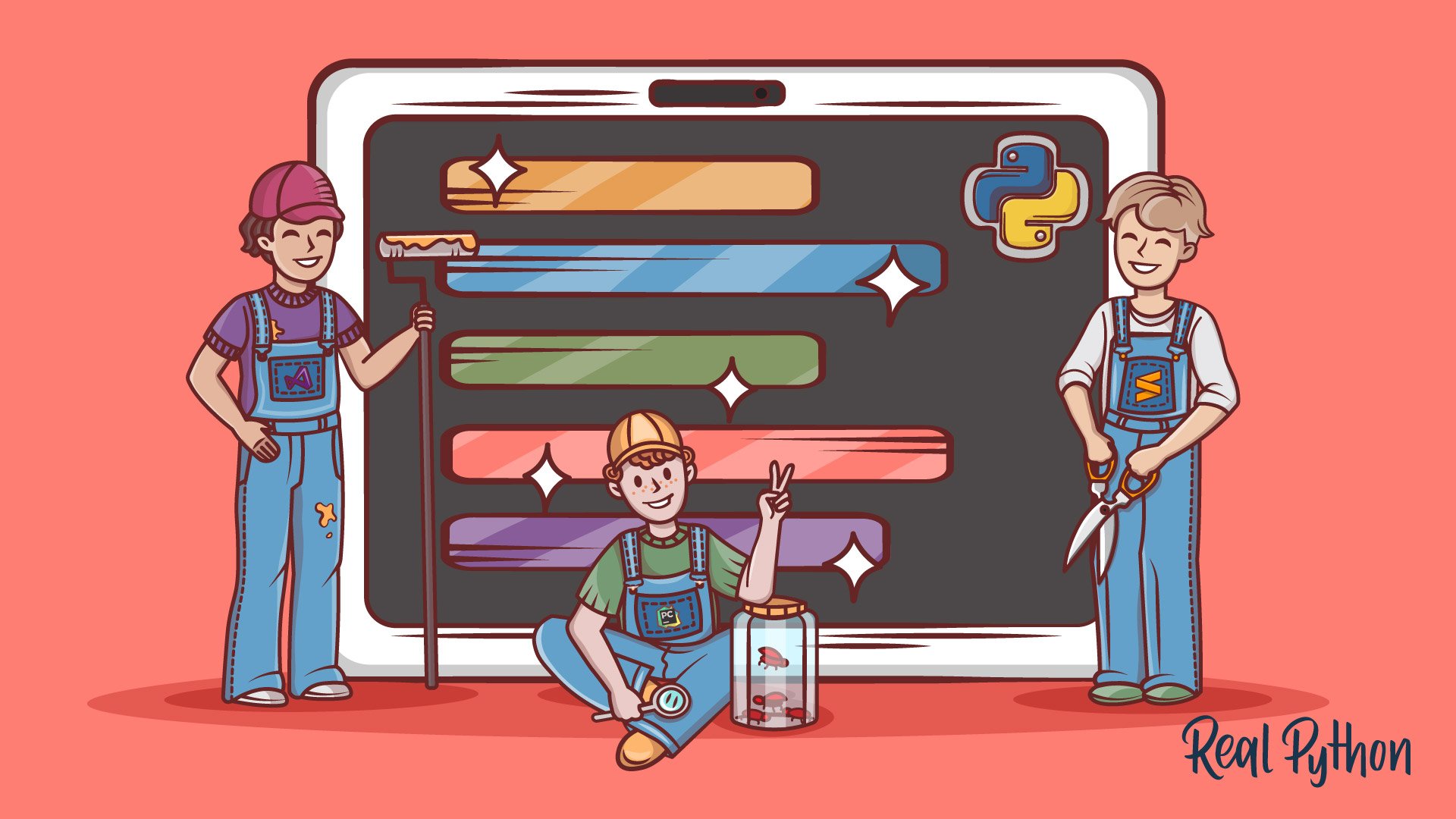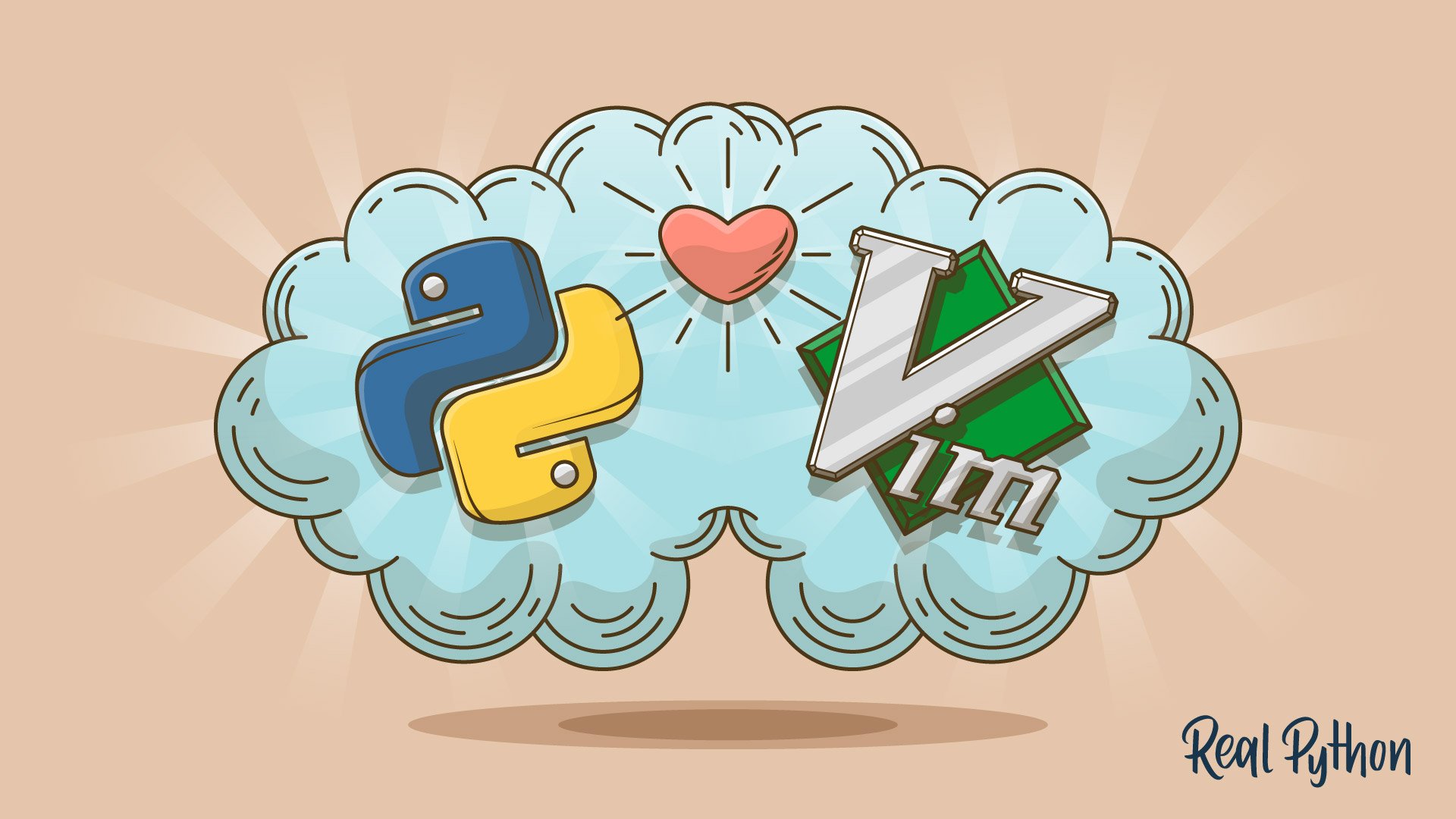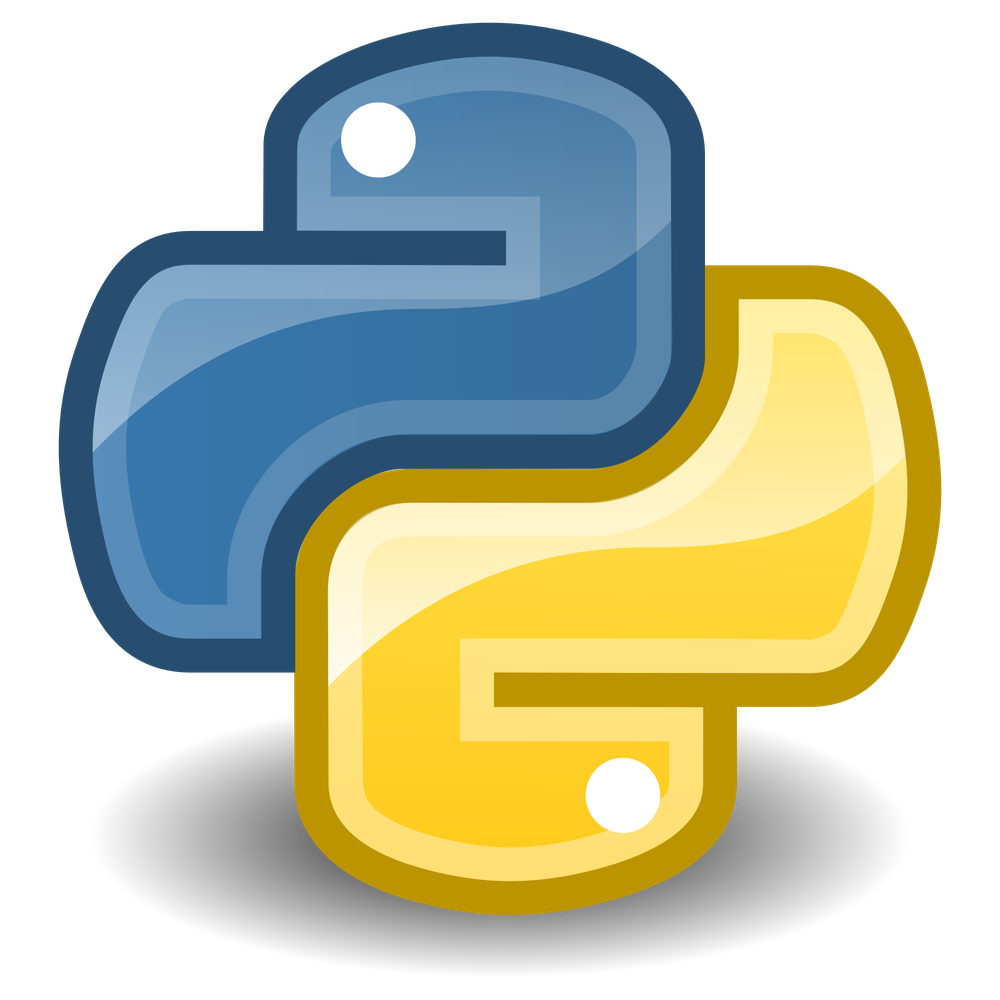Python Development Tools Tutorials
Level up your Python workflow with practical tools that help you write, test, and ship code faster. You will learn how to pick and tune an editor or IDE, use Git for version control, manage virtual environments and dependencies, run tests with pytest, and debug with pdb or IDE debuggers.
Free Bonus: Click here to get access to a free 5-day class that shows you how to avoid common dependency management issues with tools like Pip, PyPI, Virtualenv, and requirements files.
You will also automate checks with linters and formatters like Ruff, Black, and mypy. Tutorials cover CI/CD with GitHub Actions, packaging with pip, uv, or Poetry, and containerized workflows with Docker when you build and deploy services.
Install Python 3, then create and activate a virtual environment with python -m venv .venv and source .venv/bin/activate (Windows: .\.venv\Scripts\activate). Upgrade pip with python -m pip install -U pip and add tools like pipx, black, ruff, mypy, and pytest.
Popular choices for Python are to start with VS Code and install the Python extension, or use PyCharm. Any editor you’re familiar with will work, too.
Two good options are using uv or pip. You can use pip with venv and a requirements.txt file, or uv with uv add and uv.lock. For pip, use pip-tools to lock and pip-compile then pip-sync for reproducible installs.
Use GitHub Actions or GitLab CI to run lint, type check, and tests on every push and pull request.
